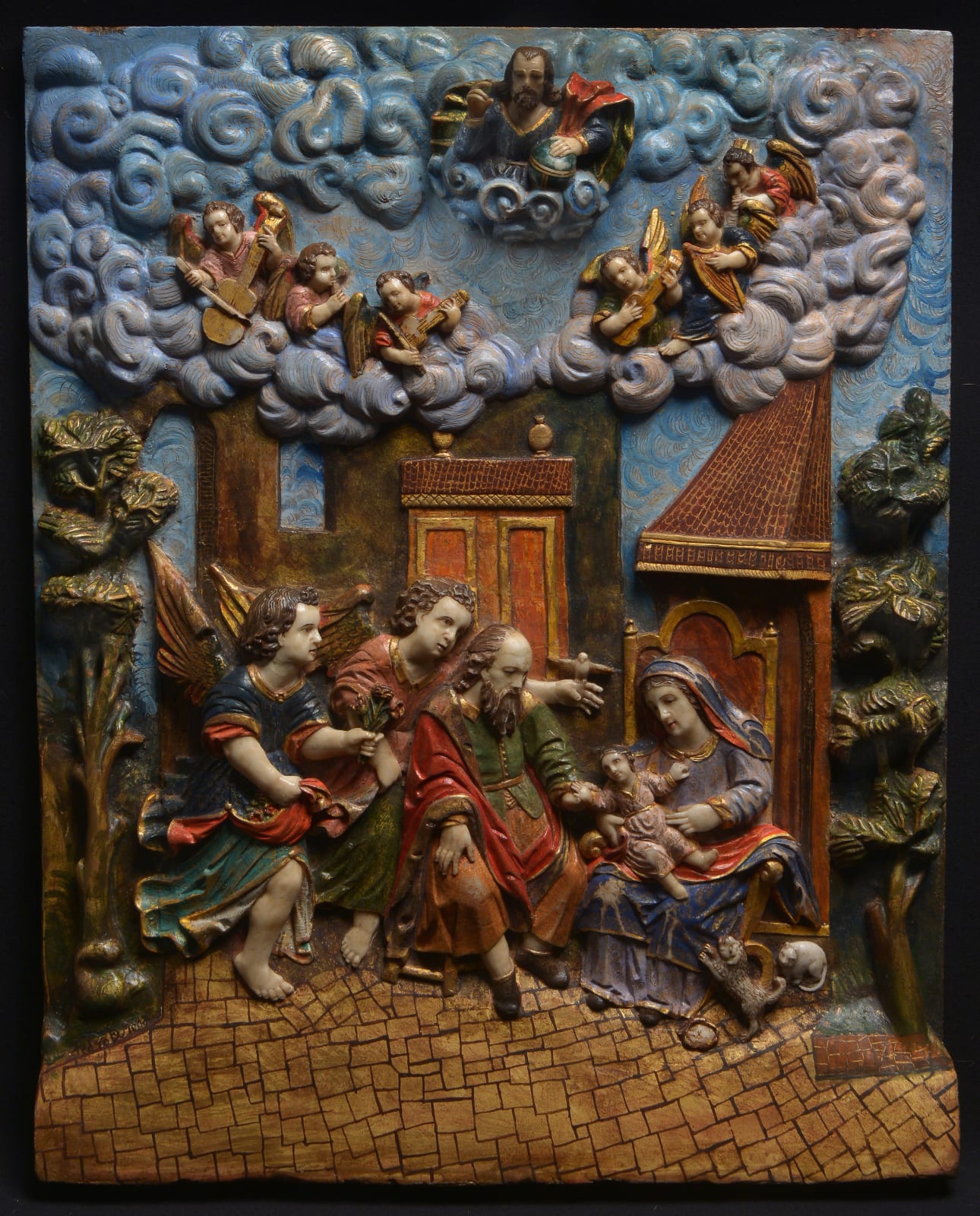Pedro de Mena
Signed: Pedro D Mena.
Carved Huamanga stone, encaustic polychromy, gold leaf “estofado”
Provenance
Private collection
Exceptional relief work in Huamanga stone depicting a moment of great intimacy and tenderness in which the Infant Mary holds out her arms towards her parents, a moment of introspection within the Holy Family. The Virgin is sat on her mother St. Anne’s lap, who is holding her in her arms. St. Joachim looks at her tenderly while holding Mary’s little hand in his. The work depicts an intimate domestic scene portraying the love between the Infant Mary and her parents.
The episode takes place at an ambiguous location combining both inside and outside spaces. It appears to be set in a patio flanked by attractive trees, where the perspective has been completely distorted[DW1] . St. Anne is sat on a high-backed chair, and behind them we find the rest of the buildings making up the rural homestead. Two angels are accompanying the tender scene, one of them bearing a bird, to symbolize St. Joachim, and the other a bouquet of beautiful flowers. The presence of these two angels undoubtedly alludes to the apocryphal gospels, the Protoevangelium of James, which tell us that St. Joachim and St. Anne, being old, had no children. An angel appeared to St. Joachim, who had retired to the desert in despair, telling him to meet Anne at the gates to the temple of Jerusalem. Meanwhile, another angel was announcing to Anne the news of her pregnancy. Joachim and Anne meet at the Golden Gate of the Temple, and there an angel brings them together in a tender embrace.
Después de una búsqueda bastante exhaustiva, sigo sin dar con el término correcto en inglés… o por lo menos eso creo. El término es “Plano rebatido”. Entiendo que se consigue al girar el plano de perspectiva de forma que entren más elementos de los que realmente podrían entrar en el campo de visión del espectador, y con una perspectiva distorsionada. Si “where the perspective has been completely distorted” no basta, puedo añadir cierta explicación “where the perspective has been completely distorted by a turning of the visual plane”
